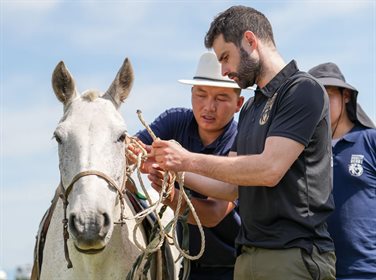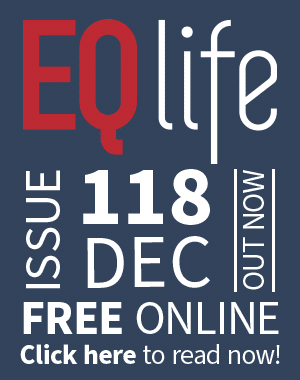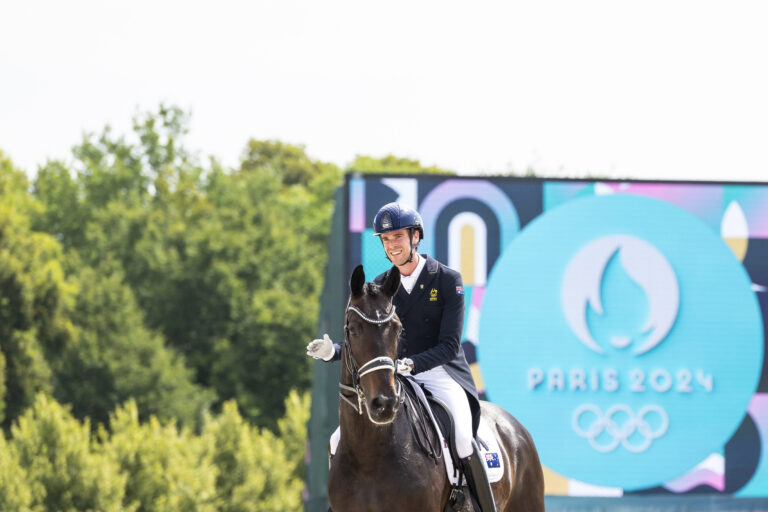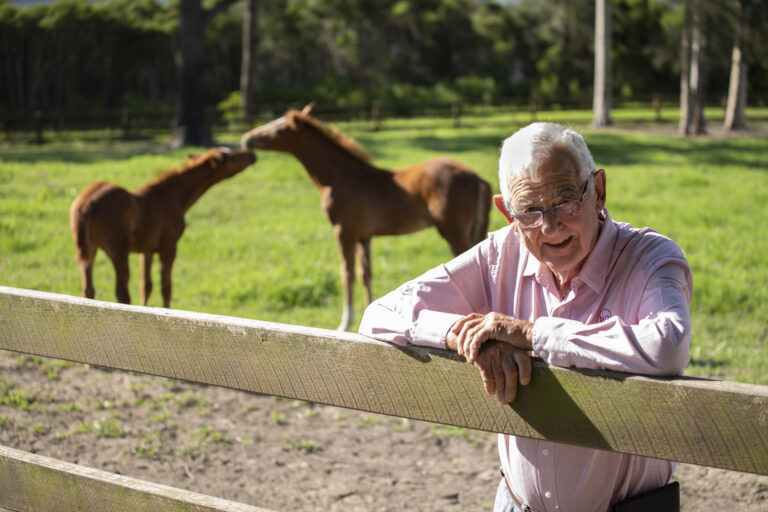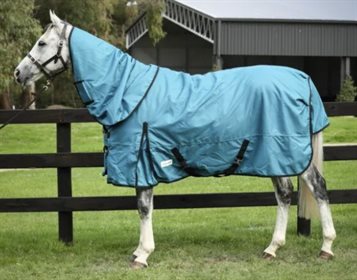Tyler Donaldson-Aitken preparing to tackle the long-distance race.
Tyler takes on the Mongol Derby – with a little help from 4CYTE™
The Mongol Derby is considered one of the world’s most gruelling horse and rider endurance events. An intense multi-horse trek that spans ten days and over a thousand kilometres. Competitors are turned loose in the vast Mongolian landscape on undomesticated ponies, with merely a small saddle pack and a GPS tracker, hoping to make it to the finish line in one piece. Tyler Donaldson-Aitken, who operates his own horse training operation in Ballarat VIC, sits down with us to recall his adventure.
What is your first horse associated memory?
I remember being very young and my Mum leading me around the block on a Shetland pony. They aren’t exactly renowned for their considerate behaviour and I was always worried he would take off with me, but Mum always had a good grip and made sure I kept a brave face.
When did horses become your full-time occupation?
They pretty much always have been. My family was in horses before I was born with Dad being a jockey. He won Bart Cummings’ first Cox Plate and many other races. As soon as I was old enough I was at the track with my father in Ballarat, riding the lead ponies and learning from him and the other riders. The only non-horse year I had was a stint in the mines. Even when I went to university to study urban planning I continued to ride trackwork to support myself. Now I have my own horse education business and it’s growing rapidly.
What inspired you to apply to the Mongol Derby?
I actually had a fairly limited understanding of what was involved. A good friend of mine did it and I thought it looked like fun so I entered and it was basically a baptism by fire. Rider’s backgrounds are vetted by the organisers and I met the requirements in terms of my horse experience and physical ability. As the start date drew closer so too did my understanding of what I was in for, but I love a challenge and was happy to take it as it came.
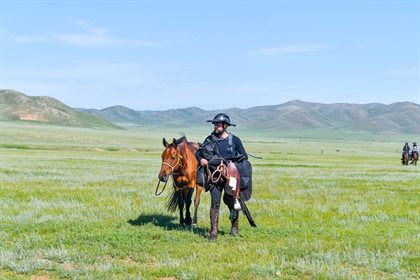
Tyler with an equine partner.
Did you feel you were well prepared for the race?
No! (laughter).
I didn’t heed the warning to keep my riding gear in my carry-on luggage, and sure enough my bag went missing in South Korea which sent me scrounging to borrow anything I could. Luckily it turned up the day before the race began.
From there it did unfold well though, and I found my stride a few days in when I met some of the other riders out on the course. Riding hours were from 7am to 7pm and you had to check in at horse stations during that time.
The number of stations varied depending on how far you were able to ride each day, with each horse station being about 20 to 30 km apart. Once there, you selected your next horse while a veterinarian would assess the horse from the previous leg. You had half an hour for their heart rate to drop below fifty six beats per minute, and you would incur a two hour penalty if it remained above that. The vets were amazing and mostly volunteers – most commented that it was nice to be in the quiet of the landscape for a few weeks and away from their busy clinics!
The ponies were incredibly tenacious and a testament to their environment. Selecting them at the stations was an experience in itself, you had to be quick and skilled to quickly familiarise yourself with an unfamiliar horse and build a rapport.
Ok, it’s Day One and the Race has started. Talk us through the day.
It was pretty crazy. On the first day you don’t get to choose your horse, you are assigned them. The starter began the race and pretty quickly the fast ponies vanished and I found myself alone in the emptiness with my slow pony, questioning the choices that led me there.
There was a rule that if you became separated from your horse you were required to try and catch it. If you were unsuccessful (as it was very hard to do in miles and miles of countryside) you would have to walk back to the nearest horse station, or get a ride back in a support vehicle. This would give you a two hour time penalty for needing assistance. These types of things played on your mind as well.
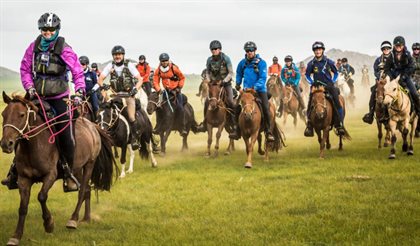
Mongol Derby riders in action.
How did you get food along the way?
We collected food and water at the horse stations, everything else we needed was carried in our saddle pack. You weren’t guaranteed to make it to a checkpoint by nightfall so to sleep we had to make do with whatever we had, generally the ground or at a station. The local people would move across The Step (the Mongolian countryside) as they grazed their herd of animals with small dwellings called “Gurs”. We would show them or call out what we had written in our vet books in Mongolian by local translators “we are in a horse race, can we stay here, please call off your guard dogs”.
Did you reach a low point at all through the race?
I did have a moment around day seven where I felt like it was getting to me. The nights on the ground, the grind to the next station had me feeling like I was about to find my limit. Feeling sore, grumpy and tired is part of the challenge and you compete to overcome that – it makes seeing the finish line all the more sublime.
What do you consider your highlight?
The connections with people made along the way, without a doubt. A common experience really unites and I’m truly grateful for those who I bonded and forged relationships with.
Do you have any advice for aspiring endurance riders based on this experience?
You have to train and be fit. In terms of cardio; I recommend being able to jog around five or six kilometres continuously. You’re in the saddle for twelve hours a day so recreating that setting at home is hard. I would advise being in a riding job so that you’re used to those types of hours. It was punishing on the knees and joints so it definitely helps to be strengthened with a lot of riding.
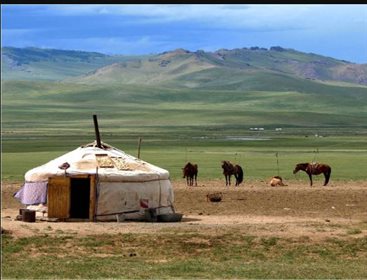
A Mongolian ‘gur’.
Speaking of joints, do you think 4CYTE™ is a good product fit for endurance style riding?
It’s good for all styles of riding! But I think it certainly has a place in competitive endurance because you’ve got horses and riders doing long miles which makes them especially susceptible to wear and tear. Horses that are comfortable and pain free are far more likely to pass veterinary inspections and remain competitive, with longer careers, than those that aren’t. If they’re suffering from joint soreness it affects everything – from not being able to go as fast to make good times to altering their temperament which diminishes their work ethic. No one wants that, at the end of the day the sport is about riders and horses enjoying themselves, together.
You can read more about Tyler and his training by following his socials below. Do you have questions regarding 4CYTE™? Visit www.4cyte.global.
Instagram
t.d.aitken_horsetraining
Facebook
Tyler D Aitken horse training and education
Youtube
T D Aitken horse training and education
Tiktok
tdaiken
This article was supplied by 4CYTE™.
READ THE LATEST NEWS ARTICLES HERE

